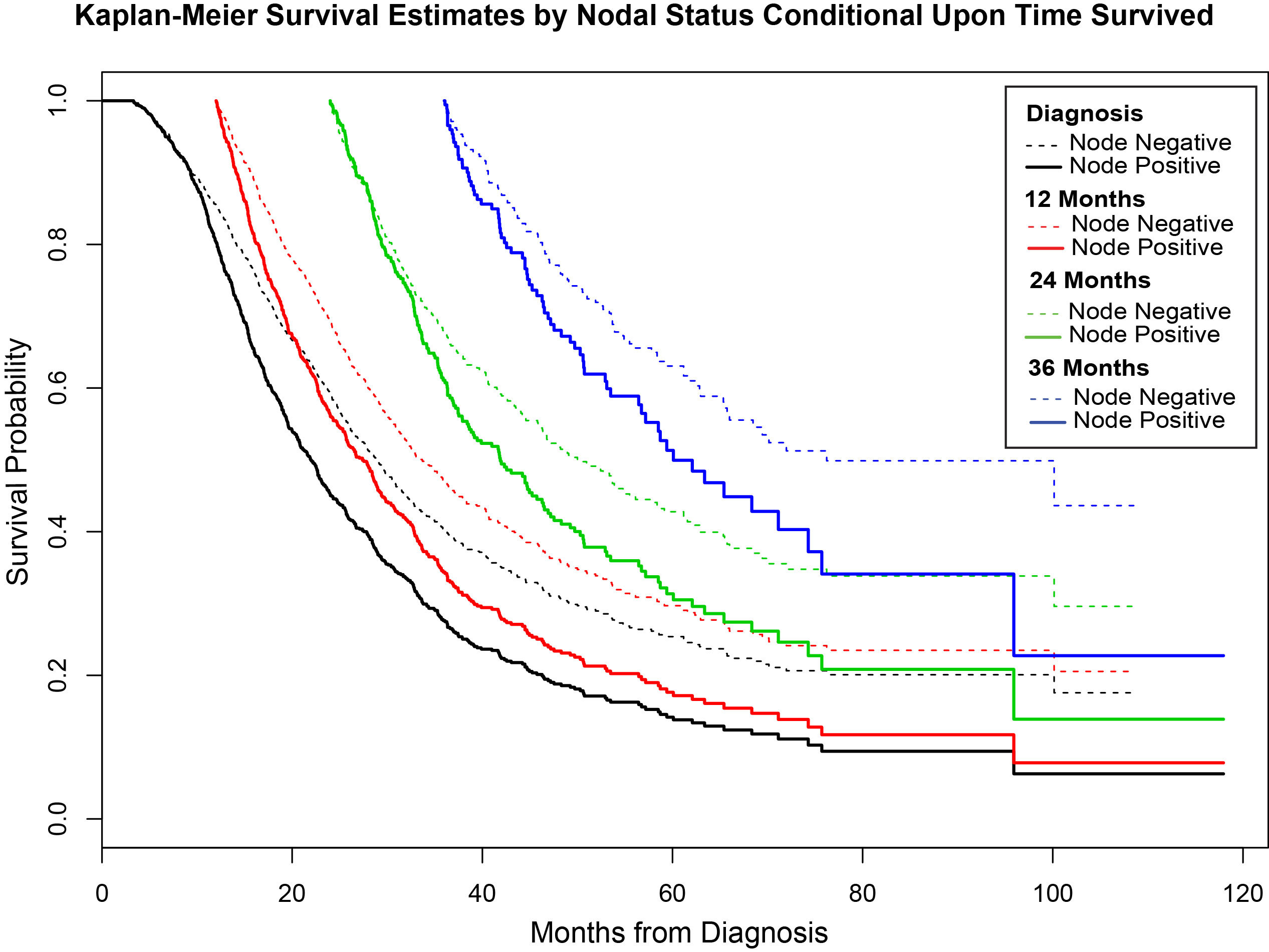|
Back to 2018 Program and Abstracts
CONDITIONAL SURVIVAL FOLLOWING NEOADJUVANT THERAPY AND SURGERY FOR PATIENTS WITH LOCALIZED PANCREATIC CANCER FROM THE NATIONAL CANCER DATABASE
Chad Barnes*, Youngjoo Cho, Mohammed Aldakkak, Callisia Clarke, Kathleen Christians, Kulwinder S. Dua, Gwen Lomberk, Raul Urrutia, Ben George, Paul S. Ritch, William Hall, Volkan Adsay, Douglas B. Evans, Susan Tsai
Medical College of Wisconsin, Milwaukee, WI
Introduction: Unlike traditional survival estimates, conditional survival estimates are dynamic and adjust for the time a patient has survived. The conditional survival of patients with localized pancreatic cancer (PC) following neoadjuvant therapy (NT) and surgery has not been reported.
Methods: Patients with pathologic stage I/II PC who received neoadjuvant therapy and surgery were identified from the National Cancer Database. Patients were classified by nodal status (negative vs. positive). Conditional survival estimates at 12, 24, and 36 months were calculated.
Results: Data was available from 2458 patients; 1324 (54%) had node negative disease and 1134 (46%) had node positive disease. The median overall survival (OS) was 26 months for all 2458 patients, 29 months for the 1324 patients with node negative disease and 22 months for the 1134 patients with node positive disease (p <0.001). The conditional survival estimates for patients with node negative disease were 34, 51, and 76 months for patients who survived 12, 24, and 36 months, respectively. The conditional survival estimates for patients with node positive disease were 27, 42, and 60 months for patients who survived 12, 24, and 36 months, respectively.
Conclusion: Conditional survival estimates provide more accurate and dynamic predictions than traditional OS estimates. This information is useful in counseling patients and can be used to develop appropriate evidence-based surveillance strategies.

Back to 2018 Program and Abstracts
|

